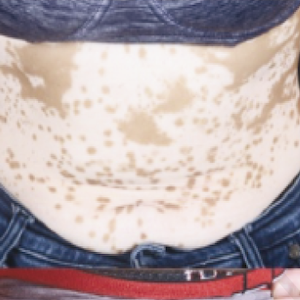Characteristics and decreased Vitiligo Area Scoring Index of vitiligo patients with narrowband-UVB phototherapy in Yogyakarta, Indonesia
 Smart Citations
Smart CitationsSee how this article has been cited at scite.ai
scite shows how a scientific paper has been cited by providing the context of the citation, a classification describing whether it supports, mentions, or contrasts the cited claim, and a label indicating in which section the citation was made.
Narrowband ultraviolet-B (NB-UVB) phototherapy is the mainstay of vitiligo therapy. The response can be evaluated using the vitiligo area scoring index (VASI) and repigmentation grade. However, few studies used VASI to evaluate phototherapy response and there are no definitive data on the reduction of VASI. This retrospective descriptive study aimed to determine the characteristics and decrease of VASI in patients with vitiligo after 36 and 48 sessions of NB-UVB phototherapy, conducted at Dr. Sardjito General Hospital, Yogyakarta, from December 2021-June 2022. The most common predilection was on the face (71.43%) and acral (61.90%). The most common responses after 36 and 48 phototherapy sessions were minimally improved (decrease in VASI<10%) and improved (reduction in VASI 10-25%). The mean decrease in VASI was 18% and 22% after 36 and 48 phototherapy sessions, respectively. 9.52% and 6.67% of patients experienced a reduction in VASI >50% after 36 and 48 phototherapy sessions, respectively. VASI assessment can be used to evaluate the response to phototherapy in vitiligo. However, VASI cannot show a reduction in vitiligo with slight repigmentation in slow-response patients.





 https://doi.org/10.4081/dr.2023.9708
https://doi.org/10.4081/dr.2023.9708





